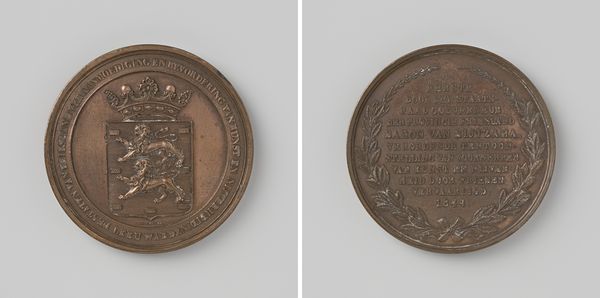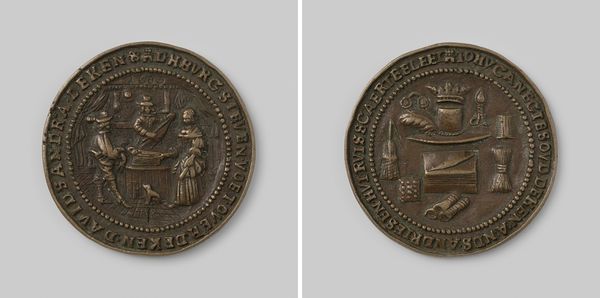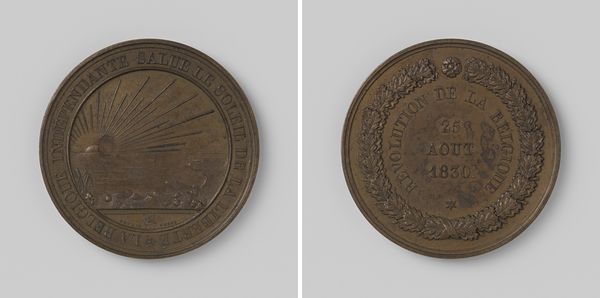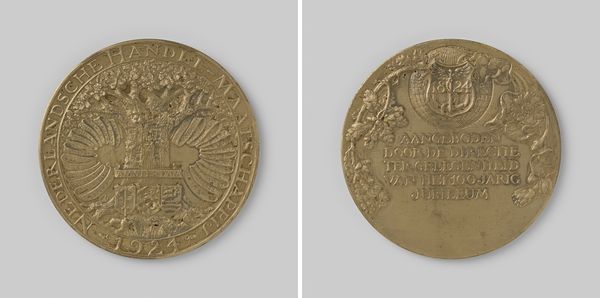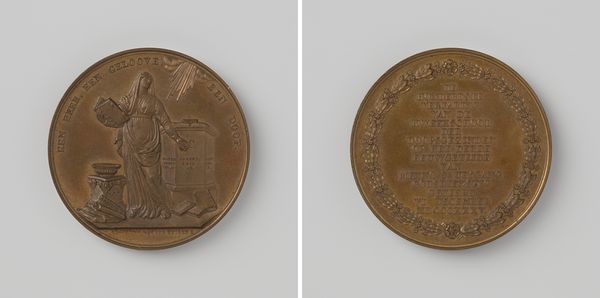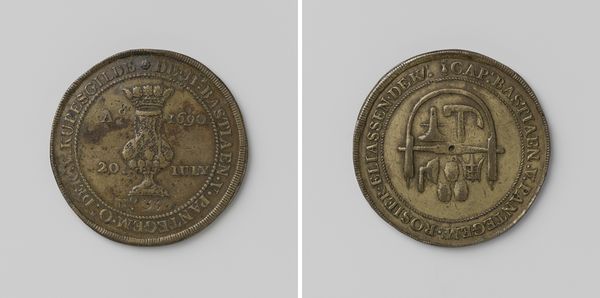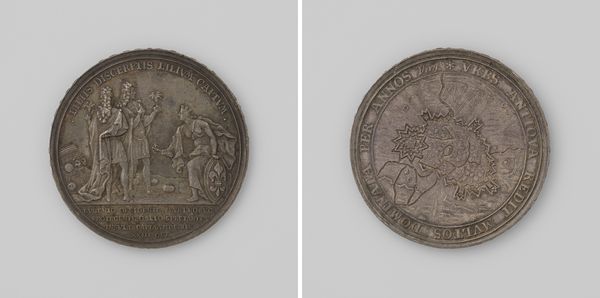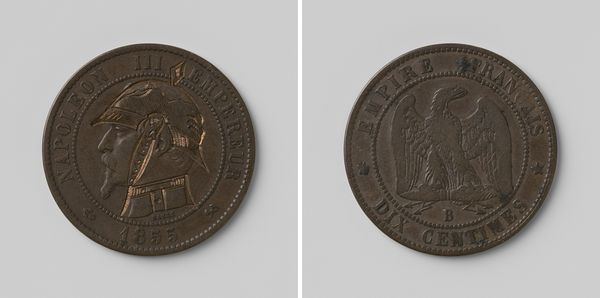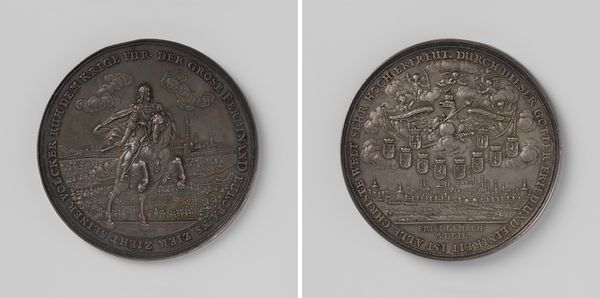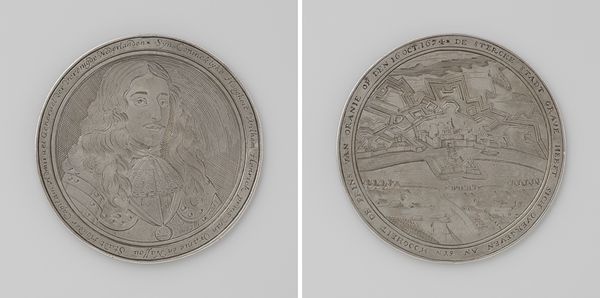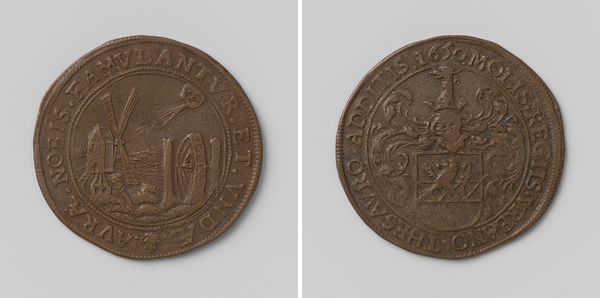
print, metal, relief, bronze, sculpture
# print
#
metal
#
relief
#
bronze
#
sculpture
Dimensions: diameter 6.0 cm, weight 95.11 gr
Copyright: Rijks Museum: Open Domain
Curator: Elias Voet Jr. created this commemorative medal, “Honderdjarig bestaan van het genootschap Kunst Zij Ons Doel te Haarlem 1921,” or “Centenary of the ‘Art is Our Aim’ Society in Haarlem 1921,” in 1922. It’s crafted from bronze, giving it a timeless quality. What strikes you most about it? Editor: There's something decidedly antiquated about this medallion, it feels burdened with history. It seems very nationalistic in its symbolism. Curator: Let's break that down. On one side, we see figures reminiscent of civic guard, perhaps archers, evoking a sense of Haarlem’s historical strength. Above, a radiant heraldic shield appears, suggesting the sanction, maybe even the divinity, of artistic purpose. What symbols are catching your attention? Editor: Well, flipping to the other side, the ouroboros, the snake eating its tail, screams of cyclical time. The text states the society’s hundred-year existence, which visually encapsulates eternity through continual return. It highlights the idea of the immortality of the arts through continual reinvention. I can appreciate Voet Jr.’s choice to place these notions into the same composition, offering viewers insight to reflect on social cycles. Curator: Yes! Voet uses powerful imagery to convey weighty themes: duty, legacy, and the enduring role of art, it’s supposed to resonate with citizens and patrons long after its creation. Editor: I imagine this medallion, especially in the early 1920s, was a way to both commemorate but also reinforce a dominant cultural narrative around Haarlem, as one rooted in European ancestral history, especially following the ravages of war. Do you think the imagery promotes an insular sense of artistic identity? Curator: That's astute. While celebrating longevity and continuity, there’s certainly an element of defining boundaries—who is included and who isn’t—within the artistic community of Haarlem. The classical motifs do position the society within a lineage of Western European artistic tradition. Editor: That push-pull of tradition and progress seems crucial for understanding any commemorative artwork. What I love here is that this medallion provokes a dialogue that extends well beyond a simple anniversary. Curator: Absolutely, and revisiting it today allows us to rethink the legacies, re-examine its context, and engage with questions about who and what constitutes “artistic value.” Editor: And in this spirit of revisiting artistic value, reflecting on this commemorative medal reminds us that progress is often built upon reinterpreting and even questioning what's come before.
Comments
No comments
Be the first to comment and join the conversation on the ultimate creative platform.


